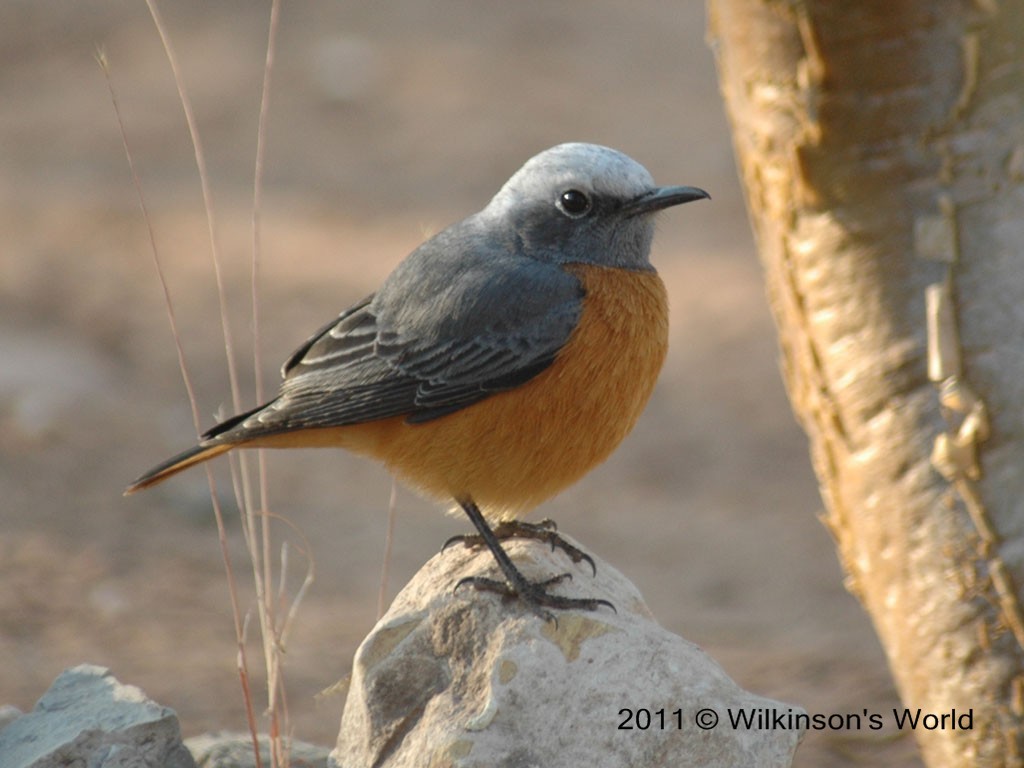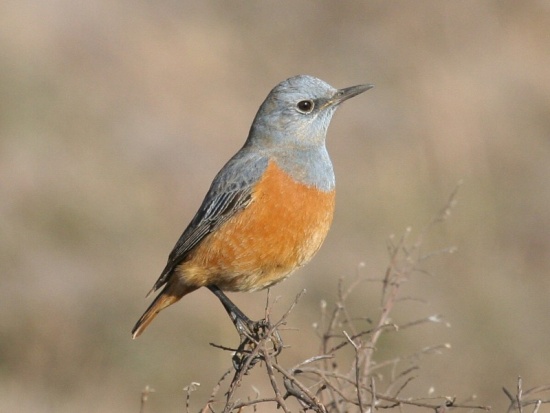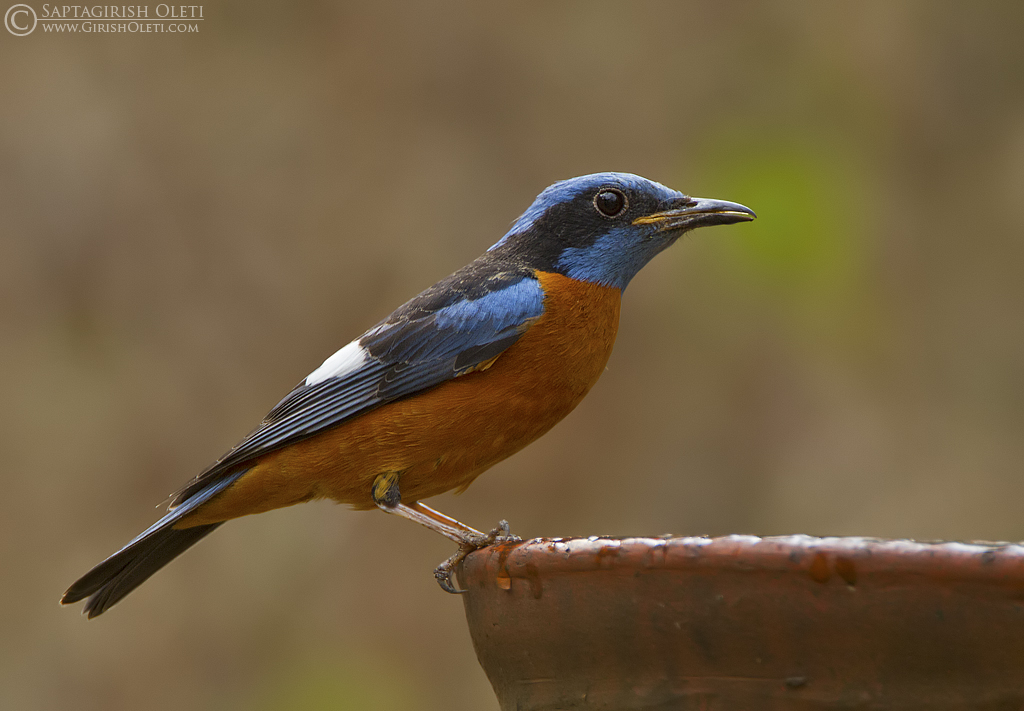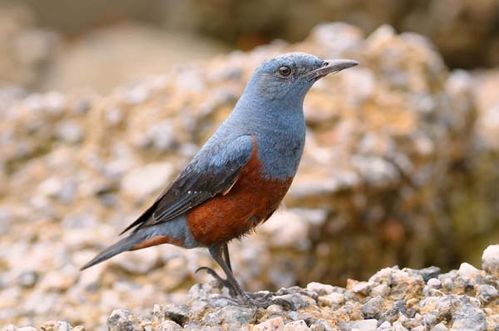
Monticola saxatilis
TAXONOMY
Monticola saxatilis Linnaeus, 1776.
OTHER COMMON NAMES
English: Rufous-tailed rock thrush, European rock-thrush;
French: Merle de roche; German: Steinrцtel; Spanish: Roquero
Rojo.
PHYSICAL CHARACTERISTICS
7.3 in (18.5 cm); male 1.4–2.3 oz (40–65 g); female 1.5–2.3 oz
(42–65 g). Gray head, upperparts, and throat with dull orange
breast to undertail. Grayish bill and legs.
DISTRIBUTION
Locally from Iberia and Morocco, eastwards through southern
Europe, Turkey, and Iran to central Asia; winters in Africa.
HABITAT
Sunny, dry, stony, or rocky slopes, upland meadows, and pastures
with scattered bushes, barren stony hillsides; winters in
wooded savanna.
BEHAVIOR
Pairs or family groups, mostly terrestrial or perching on low
trees or bushes; hops over ground, stands upright like a
wheatear, wags tail; mostly shy and solitary.
FEEDING ECOLOGY AND DIET
Large insects, also centipedes, millipedes, spiders, small lizards,
snails, and some fruits.
REPRODUCTIVE BIOLOGY
Monogamous, territorial; breeds from April onwards; nest in
crevice in rock face or wall, under boulder; four to five eggs
incubated only by female for 14–15 days; young fly after
14–16 days.
CONSERVATION STATUS
Not threatened.
SIGNIFICANCE TO HUMANS
None known.
Photo Gallery of - Rock thrush




 Animalia Life
Animalia Life